
THIS ARTICLE IS MORE THAN FIVE YEARS OLD
This article is more than five years old. Autism research — and science in general — is constantly evolving, so older articles may contain information or theories that have been reevaluated since their original publication date.
13 May 2017: Day three

Associate professor of psychiatry and neurology, University of California, Los Angeles
Encouraging collaboration: “I returned home from the meeting feeling inspired and invigorated by the research being done in autism across a wide spectrum of development (from early infancy to adulthood) and investigative domains (from cognitive neuroscience to implementation science). What makes this meeting particularly special is that individuals with incredibly diverse backgrounds, areas of expertise and perspectives are all unified by the common goal of better understanding autism. The meeting provides an opportunity for cross-talk between investigators who may otherwise never meet, and gives trainees and junior faculty direct access to senior scientists and clinicians.”
Neural circuits: “This year, I was particularly struck by the strength in neuroscience, especially around imaging and electrophysiological biomarkers in early infancy. These studies clearly demonstrate that disruptions in brain development occur well before behavioral signs emerge, reinforcing the potential for even earlier detection of risk and initiation of interventions.
Some common themes that emerged at this meeting include the need for multidisciplinary investigations integrating brain and behavior; strategies for data-sharing to improve sample sizes, especially in rare populations; and standardization of methods used to process imaging and electrophysiological data.
There was so much high-quality science that my only regret was not having more time to enjoy the city of San Francisco … but I was eager to get home in time to celebrate Mother’s Day with my sons.”

Assistant professor of psychology in psychiatry, Children’s Hospital of Philadelphia
Brief but bright: “I’m fascinated by experiments that can measure real-life behaviors, even in highly controlled experiments. The talks by Suzanne Macari and Anna Milgramm, both in Katarzyna Chawarska’s lab at the Child Study Center at Yale University, provided elegant examples of how to do this. In one experiment, they drew the child into very brief social interactions involving games and toys. In just a few short minutes, they got a wealth of quantitative data on a whole profile of meaningful social behaviors. They also learned how the social context of each brief activity affects the child’s behavior. I keep thinking about their presentations. They are definitely influencing how I think about ways to quickly sample a diverse range of social reactions and interactions in the future.”
Assistant professor of psychiatry, University of California, San Francisco
Increasing inclusivity: “I’ve been excited by the increased visibility of efforts to expand autism research to include minimally verbal children and adults. Wednesday’s preconference included discussions of redefining ‘meaningful outcomes’ for this population. Friday’s keynote highlighted interventions for minimally verbal school-age children. Another panel examined neuroscience and behavioral methods for assessing receptive language, prosody and emotional behavioral problems in minimally verbal individuals. And Saturday morning’s special-interest group was aimed at sharing clinical strategies to improve inclusion of this population in the neuroscientific studies from which they are often excluded.”
“While these sessions have highlighted great challenges to inclusion of minimally verbal individuals in our research, the thoughtfulness, energy and dedication of leaders in our field such as Helen Tager-Flusberg, Connie Kasari and Christine Nordahl are both contagious and encouraging.”
Director, Center for Translational Neuroscience, University of Missouri
Building biomarkers: “Emory researchers Warren Jones and Ami Klin started off the day with an elegant demonstration of assessment of social visual engagement that holds promise for early identification — and, ultimately, early intervention. An excellent subsequent session by Holly Stessman on phenotyping included an impressive effort to identify and begin to understand autism and intellectual disability risk genes. Meanwhile, Shafali Jeste gave a superb presentation on biomarkers for Dup15q syndrome. She included the important insight that these markers could also help to identify people who do not have this syndrome but for whom aspects of the mechanism are sufficiently similar that putative targeted therapies could be used for both groups.”
Lesson learned: “As a group, we have learned our lessons from the recent large negative clinical trials and are taking the heterogeneity factor in autism very seriously. This will markedly enhance the prospects for biological approaches to treatment.”
12 May 2017: Day two
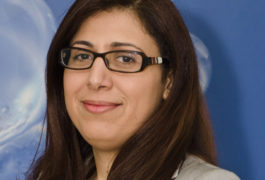
Assistant professor of psychiatry, McGill University
Going global: “A few years ago, IMFAR inaugurated a section on international and cross-cultural perspectives. Accordingly, IMFAR has received an increasing number of submissions each year from around the globe, including novel, high-impact research that is advancing this field.
On the heels of this trend, scientists are debating the need for different standards of quality and rigor for research in low- and middle-income countries. This question came up during the morning session of the special-interest group on implementation of intervention in community-based settings. One of the panelists made a comment about not expecting the same quality of research to emerge from places such as sub-Saharan Africa, where, according to what he’d heard, children with autism are sometimes left in the ‘jungle.’
On the one hand, the panelist offered a rational resolution to the debate: Editors and peer reviewers need to consider the cultural and local context in which research happens. On the other hand, I wonder how much progress we are really making if we characterize people in low- and middle-income countries as ‘other,’ but deserving of compassion and charity.
Real progress will happen only when we view global research through the same lens through which we view our own. Presentations that followed were testament to how feasible and valuable global research can be. A truly global approach to autism now spans populations as diverse as ethnic minorities in the United States, aboriginal children in Australia and schoolchildren in South Africa and India. As a global research community, we have much to learn from these pioneering autism researchers.”
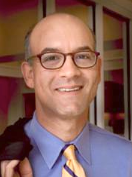
Clinical investigator, Maine Medical Center Research Institute
Promising paradigms: “I am excited to see an increased focus on research about individuals who are minimally verbal and have challenging behaviors. Matthew Goodwin, assistant professor at Northeastern University, described using wearable-sensor technology to quantify physiologic arousal relating to repetitive and challenging behaviors. This kind of work takes us beyond observer-rated surveys to biologically based, objective outcome measures for clinical trials in autism.”
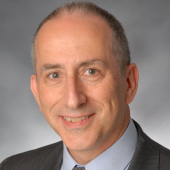
Director, Center for Development and Learning at the Kennedy Krieger Institute
Seeking solutions: “One forum focused on ethnic disparities in diagnosis and management of autism. The panelists probed this issue using several different methodologies. My conclusion: No matter how you look at it, minority populations, especially primarily Spanish-speaking families, are likely to be diagnosed and treated later than others. So now is the time to start exploring and investigating solutions.”
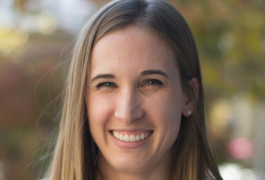
Postdoctoral fellow, University of California, San Francisco
Underserved and underdiagnosed: “Today I attended the session on the epidemiology of autism, and was really struck by a presentation by Anna Abbacchi, a student at Washington University in St. Louis, on the experiences of African-American families getting a diagnosis and services for their children. A theme at this meeting is that, perhaps not surprisingly, underserved populations are also underdiagnosed and underserved with regard to autism.
But the data from this presentation seemed to rule out some of the usual suspects. Upwards of 90 percent of African-American parents report that they had a primary care physician and health insurance at the time they first had concerns about their child’s development. Yet these parents still required more time and more office visits to get a diagnosis for their child. One can only hope that recognizing disparities like these is a first step toward correcting them.”

Director, Center for Translational Neuroscience, University of Missouri
Early excellence: “Connie Kasari, a professor at the University of California, Los Angeles, reminded us at the morning’s keynote that early behavioral interventions are still far and away the most potent therapies for autism. She discussed the JASPER program, a social communication intervention that shows promise in children on the spectrum for improving complex verbal ability.”
Maternal roles: “Researchers continue to make progress on deciphering the role of maternal antibodies in autism. Today, Jeremy Veenstra-VanderWeele‘s team discussed an interesting role in autism for serotonin in mothers’ blood. The team found that high blood-serotonin levels in mothers is associated with less impairment in social and language abilities in their children with autism, as well as less severe repetitive behaviors.”
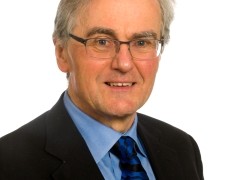
Professor of behavioral and brain sciences, University College London
Compassionate keynote: “Wonderful keynote from Connie Kasari. This was exactly what a keynote should be. She made important points about how to design and evaluate interventions, in an accessible and scientifically valid way. She held the attention of her audience with great videos of interventions in action that really focused on the message. She knew all about the kids in her cohort and their families, and she had real insights from clinical involvement. There was compassion and there was scientific rigor. It was inspirational.”
10 May 2017: Day one
Chancellor’s fellow in developmental psychology, University of Edinburgh
Motivation matters: “I went to the session called ‘Interventions with Young Children and Parents’ and was struck by the final talk from Grace Gengoux, an associate professor at Stanford University. She was talking about an intervention model in which the goal is to motivate children with autism to engage with peers rather than to repetitively teach a social skill. She talked about the importance of providing children with opportunities to experience successful social interactions, and I found that very positive and inspiring. Too often, we try to coach children with autism to adopt a neurotypical set of behaviors. By contrast, this model was all about creating an environment where friendships could be built from the child’s own motivations.”
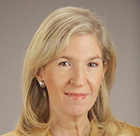
Robert E. Chason Chair in Translational Research, University of California, Davis MIND Institute
Plethora of posters: “Elodie Drapeau, an instructor in Joseph Buxbaum‘s laboratory at the Icahn School of Medicine at Mount Sinai, presented an impressively comprehensive set of compelling behavioral phenotypes in a new SHANK3 full-deletion mouse.
In addition, Kathy Chadman, a researcher at New York State Institute for Basic Research, reported that a high-fat diet reduced repetitive self-grooming in a strain of mice known as BTBR. Dr. Chadman’s poster is also important because her data illustrate the absence of the usual sociability deficits seen in some sets of BTBR mice.”
Fruit fly fundamentals: “Researchers Robin Shafer and Jim Bodfish at Vanderbilt University developed an innovative approach to assay social behaviors in Drosophila. They scored social distance and dispersal in response to the sound of a wasp predator. Flies are usually close to one another, but move apart when the predator sound begins. The mutant flies don’t show this socially adaptive response to the sound. Developing behavioral assays such as this can offer clues to socially adaptive behavior in fly models of autism.”

Director, Center for Translational Neuroscience, University of Missouri
Promising projects: “Keynote speaker Pat Levitt got us off to a good start by explaining the role of the MET gene in autism, including how it interacts with a range of other factors, after it is expressed in development and at later stages. The morning sessions included fascinating work on biomarkers that may hold promise for predicting autism in infants, and brain imaging findings from the Longitudinal European Aging Project. Another session covered quality of life with aging in autism. Finally, results from clinical trials of oxytocin and vasopressin give us a glimmer of hope that these hormones may be effective treatments for some forms of autism.”

Associate professor of psychology and behavioral sciences, University of Washington
Autism advocacy: “The highlight for today, for me, was the acceptance speech for the Advocate Award, given by Autism Science Foundation president Alison Singer. Singer shared her personal story, along with some of the history of autism. Then she put forward some ideas for improving quality of life for individuals with autism. She proposed adopting new terms for autism and pushed for equal rights for choosing how and where to live.”
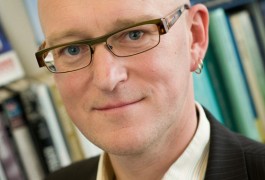
Chair of clinical child psychology, King’s College London
A time to connect: “Along with catching up with friends and colleagues, I plan to go to one or two sessions outside my own area. It can be hard to keep up with the vast number of publications that appear each year about autism, and hearing about research from the horse’s mouth, so to speak, is a great way to learn. Also, our collaborative European group is going to the Friday-night baseball game — Cincinnati Reds versus the San Francisco Giants!”
Professor of human development and psychology, University of California, Los Angeles
Preconference convergence: “We often think that a single outcome measure is what we need in a clinical trial. Yet, autism heterogeneity means that a single measure will be unlikely to give us a complete or accurate view of an individual — whether we measure behaviors in a clinical or real-world context. I was very encouraged by the talks and conversations today in the preconference workshop on ‘meaningful measures.’ Researchers are grappling with these issues in creative and impactful ways. They are collaborating with families and individuals with autism to come up with outcome measures that have more relevance to real life. The future seems bright for improved outcome measurement in clinical trials research.”
9 May 2017: Heading to San Francisco
The West Coast home of hippies, techies and the Golden Gate Bridge is host to this year’s International Meeting for Autism Research (IMFAR). Now in its 16th year, IMFAR is the oldest and largest autism research meeting in the world — and it grows every year.
On Wednesday, some 2,200 researchers, clinicians and others from 50 countries will gather at the San Francisco Marriott Marquis Hotel. They plan to disclose the latest scientific discoveries in some 1,500 panels, posters and oral sessions. That’s an uptick from the 1,800 participants and 1,400 presentations at last year’s IMFAR.
This year’s keynote speakers include Pat Levitt, who studies the neural pathways governing learning and memory, and Connie Kasari, who is developing community-based interventions for autism. Saturday’s keynote features Marcus Autism Center researchers Ami Klin and Warren Jones, who plan to discuss how to assess autism in infancy. The rest of the conference covers a similarly broad spectrum of topics, ranging from language to genetics.
You may run into Spectrum’s team of reporters at some of these sessions. We’ll also be hosting our annual Twitter chat live from IMFAR on Thursday, 11 May at 12:30 p.m. PDT. We plan to pose questions based on research presented at the conference using our handle @Spectrum and the hashtag #IMFARChat. Follow along online by searching for the hashtag, or, if you are attending the conference, participate in person at the Marriott Marquis’ press room. (It’s in the Willow Room on level B2.)
You can also help to build our wiki — a glossary of autism terms — on Friday, 12 May at 12:00 p.m. PDT in the press room. Review the wiki and come prepared with the term you’d like to add. Lunch is on us. If you complete your entry, you will receive a Spectrum tote bag with one of our site’s stunning illustrations.
If you miss something at the conference, we’ve got you covered. Follow our team’s extensive news reports of the sessions and posters here. We’ll also publish quotes from the conference floor in a running blog on this page. A summary of our activities will appear in our daily IMFAR newsletter.
We hope to see you in San Francisco!
For more reports from the 2017 International Meeting for Autism Research, please click here.


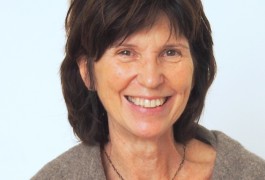
By joining the discussion, you agree to our privacy policy.